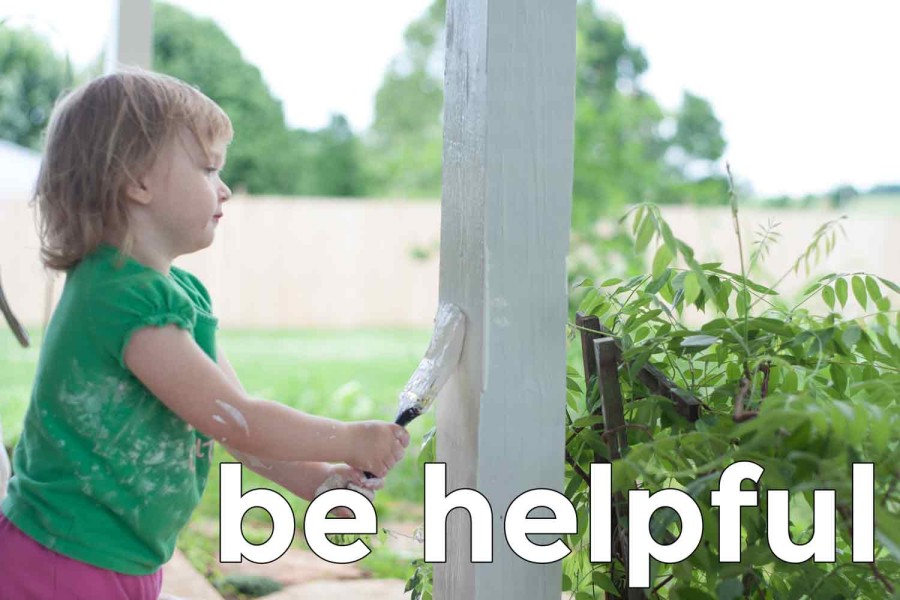The mechanisms of business can be overwhelming. Even the simplest problems can splinter into energy-sapping challenges—rife with internal hurdles like politics, communication problems, or lack of support.
In customer experience management, those challenges can threaten how we relate to customers as people. In our embrace of data points—armed with our head-down, hurdle-jumping mindset—we can turn our noble cause into an awful lot of work.
So, let’s take a few minutes to remember why that work matters.
1. We’re trying to help our customers.
Customers are people, with needs to satisfy and problems to solve. As customer experience professionals, our job is to help them, so they’ll come back again. If we can show more value, treat them kindly, and make their lives easier, then we’re giving them reasons to come back.
If we took the time to strip down key performance metrics like Net Promoter Scores and customer satisfaction, we’d end up with our basic ability to help customers achieve their goals. Because if we’re not helpful, then customers will look elsewhere.
Ultimately, the point of customer experience strategy is to be more helpful to our fellow human beings. And by making business more human, we can also make the world a little bit brighter.

2. Customer journeys can be arduous.
In practices like customer journey mapping, we imagine customers moving from a state of need to a problem solved. We use data to figure out where customers are flowing, where they’re snagging, and where we can focus our energy for the best returns.
However, when we approach data in aggregate, and consider customers as a singular entity, it’s possible to forget the individual emotions and histories that drive customer actions.
But each of those customers has a unique perspective based on those same emotions and histories.
That’s why customer feedback management is so important. It helps us understand what individual customers are feeling, and why, and it can present opportunities to solve their unique problems. However, it will always fail to inform us of the silent majority of customers, who come and go without so much as a word.
We need empathy to be able to view ourselves from the outside, and see ourselves as those customers see us. This means taking steps to improve our understanding, like thoughtful observation, collecting frontline employee feedback, and viewing the world with open minds and hearts.
I’m reminded of three (somewhat related) things:
- The fascinating Temple Grandin, who revolutionized the cattle industry by being able to approach livestock practices from the perspective of cattle. (Also, her namesake HBO biopic is quite well done and worth a watch.)
- Objectified, a documentary by Gary Hustwit, detailing the processes of industrial design. One item of note is that designers think it’s more important to consider and observe users at the extremes than in the middle of the curve. If you design for the extremes, the average user will still be able to use the item—but extreme users can’t use items designed for the average user. (The documentary is available on Netflix at the time of this writing.)
- Sugru, a product and brand that encourages people to fix and customize their world. You’d be amazed how many things could be just a bit better, once you start looking for opportunities. (Sugru is available online, in Target, and home improvement stores.)
But back to my point: The customer journey can be emotional and frustrating. We must be considerate of the paths customers take to our doorsteps, and the emotions that occur in their interactions with us. After all, we want to make their lives easier, and more fulfilling, so they journey back.

3. Customer experience is about building relationships.
Business involves building. We build networks, revenue, referrals, and opportunities. But all of those things are dependent on something much more basic: human relationships.
If we’re committed to it, we’ll never be done making the customer experience better. Variables like technology, trends, and customer interests make customer experience improvement a complex and evolving challenge. But if we can build strong relationships with our customers, they’ll give us time to solve that challenge.
Like any relationship, it’s best to take it one step at a time. If we pay attention to each step, and show some heart, then we can build our businesses together, with our customers. And as we keep improving, those tiny steps will combine into cultures based on commitment to building trusting relationships with customers.

I wish you the best on your quest to improve customer experience in your business. Keep up the good fight. It’s worth the effort.

Image Credits:
- Molly Painting the Porch Posts-8 by Misty O’Dell, CC BY 2.0
- Pug Imposter ‘Pug Love’ by DaPuglet, CC BY-SA 2.0
- Buds by Juhan Sonin, CC BY 2.0
This article was syndicated from Business 2 Community: Customer Experience Best Practices: Empathy
More Sales & Marketing articles from Business 2 Community:




